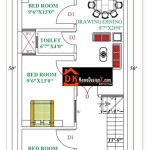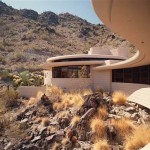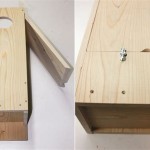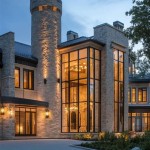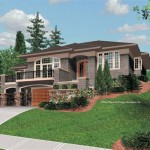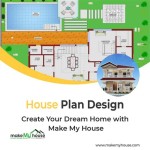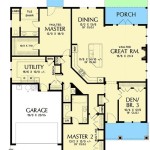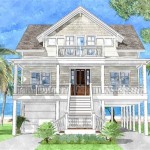Modern House Plans: Design Your Dream Homestead
The concept of a homestead, a self-sufficient and comfortable dwelling often surrounded by land for cultivation and livestock, has evolved significantly. Modern house plans for homesteads now blend traditional principles of practicality and sustainability with contemporary aesthetics and technological advancements. Designing a dream homestead requires careful consideration of lifestyle needs, environmental factors, and budget constraints.
The initial stage involves defining the purpose of the homestead. Is it intended for full-time self-sufficiency, a weekend retreat, or a combination of both? The answer to this question will significantly influence the size and layout of the house, as well as the design of surrounding structures such as barns, greenhouses, and workshops. A full-time homestead will necessitate larger storage spaces for food preservation and tools, while a weekend retreat might prioritize entertainment areas and guest accommodations.
Location is paramount. Climate, topography, and local building codes all play crucial roles in determining the feasibility and design of the homestead. Access to water, sunlight, and fertile soil are essential for successful gardening and animal husbandry. Furthermore, proximity to essential services such as healthcare, schools, and markets should be factored into the decision-making process, balancing the desire for seclusion with practical considerations.
Once the purpose and location have been established, the architectural design process can begin. Modern homestead house plans often incorporate elements of passive solar design, utilizing the sun's energy for heating and lighting. This involves careful orientation of the house to maximize solar gain in winter and minimize it in summer. Overhangs, awnings, and strategically placed windows can help to regulate indoor temperatures, reducing reliance on artificial heating and cooling systems.
Sustainable building materials are also increasingly common in modern homestead design. Reclaimed lumber, recycled steel, and locally sourced stone are often preferred over conventional materials for their environmental benefits and aesthetic appeal. These materials can contribute to a rustic yet sophisticated look, blending seamlessly with the natural surroundings.
Interior design should prioritize functionality and efficiency. Open floor plans are popular for their ability to maximize space and promote natural light. Kitchens are often designed with ample counter space and storage, reflecting the importance of food preparation and preservation in a homestead lifestyle. Mudrooms or entryways are essential for containing dirt and clutter, preventing them from spreading throughout the house.
The layout of the property surrounding the house is equally important. Gardens should be located in areas with optimal sunlight and soil conditions. Livestock enclosures should be designed to provide adequate space and protection for animals, while also minimizing their impact on the surrounding environment. Composting systems, rainwater harvesting systems, and renewable energy sources such as solar panels and wind turbines can further enhance the homestead's self-sufficiency and sustainability.
Prioritizing Energy Efficiency and Sustainability
Modern homesteads place a significant emphasis on energy efficiency and sustainability. This involves incorporating passive solar design principles, utilizing high-performance insulation, and implementing renewable energy systems. Passive solar design, as previously mentioned, leverages the sun's energy for heating and lighting, reducing reliance on conventional energy sources.
High-performance insulation is crucial for minimizing heat loss in winter and heat gain in summer. This can be achieved by using materials such as spray foam, cellulose, or mineral wool, which offer superior thermal resistance compared to traditional fiberglass insulation. Properly insulated walls, roofs, and floors can significantly reduce energy consumption and lower utility bills.
Renewable energy systems, such as solar panels and wind turbines, can provide a clean and sustainable source of electricity. Solar panels are becoming increasingly affordable and efficient, making them a viable option for many homesteads. Wind turbines can generate electricity from wind power, but their effectiveness depends on the local wind conditions. A combination of solar and wind power can provide a reliable and diversified energy supply.
Water conservation is another important aspect of sustainable homestead design. Rainwater harvesting systems can collect rainwater from roofs and store it for irrigation, livestock watering, or even household use (after proper filtration). Greywater systems can recycle water from showers, sinks, and washing machines for use in flushing toilets or watering gardens. These systems can significantly reduce water consumption and lower water bills.
Furthermore, the choice of appliances and fixtures can also impact energy and water efficiency. Energy Star-certified appliances consume less electricity than standard models, while low-flow toilets and showerheads can reduce water consumption without sacrificing performance. LED lighting is also a more energy-efficient alternative to incandescent or fluorescent lighting.
Designing for Functionality and Practicality
A modern homestead should be designed for functionality and practicality, prioritizing the needs of the occupants and the demands of the homestead lifestyle. This involves creating spaces that are both comfortable and efficient, and that support the various activities that take place on the property. The kitchen, as the heart of the home, should be designed to facilitate food preparation, preservation, and storage. Ample counter space, a large sink, and plenty of storage cabinets are essential. A walk-in pantry can provide additional storage space for canned goods, dried foods, and other supplies.
The living area should be designed to provide a comfortable and relaxing space for family and guests. A fireplace or wood stove can add warmth and ambiance, while also providing a backup heating source in case of power outages. Large windows can offer panoramic views of the surrounding landscape and bring natural light into the room.
Bedrooms should be designed to provide privacy and rest. Ample closet space is essential for storing clothing and personal belongings. A master suite with a private bathroom and walk-in closet can provide a luxurious and comfortable retreat. Bathrooms should be designed for functionality and efficiency, with features such as low-flow toilets, showerheads, and faucets.
Mudrooms or entryways are essential for containing dirt and clutter, preventing them from spreading throughout the house. These spaces should include storage for shoes, coats, and other outdoor gear. A laundry area should be located near the mudroom or entryway for easy access. Garages or workshops should be designed to provide ample space for vehicles, tools, and other equipment. These spaces should be well-lit and ventilated, and should include storage for tools and supplies.
Outdoor living spaces are an important part of the homestead lifestyle. Porches, decks, and patios can provide spaces for relaxing, entertaining, and enjoying the natural surroundings. Gardens should be located in areas with optimal sunlight and soil conditions. Raised beds can make gardening easier and more accessible, especially for people with mobility issues. Livestock enclosures should be designed to provide adequate space and protection for animals, while also minimizing their impact on the surrounding environment.
Integrating Technology for Enhanced Living
While maintaining self-sufficiency is a core tenet of homesteading, integrating modern technology can significantly enhance the comfort, efficiency, and security of the modern homestead. Smart home technology offers a range of benefits, from automated lighting and temperature control to security systems and remote monitoring capabilities.
Smart thermostats can learn the occupants' preferences and automatically adjust the temperature to optimize energy efficiency. Smart lighting systems can be programmed to turn on and off at specific times, or to respond to motion or ambient light levels. This can help to reduce energy consumption and improve security.
Security systems can provide peace of mind by monitoring the property for intruders and alerting the authorities in case of emergencies. Security cameras can provide visual surveillance of the property, while motion sensors can detect movement around the perimeter. Smart locks can allow homeowners to remotely lock and unlock doors, providing added security and convenience.
Remote monitoring systems can allow homeowners to monitor various aspects of the homestead from anywhere in the world. This can include monitoring the temperature of greenhouses, the water levels in tanks, or the health of livestock. Remote monitoring can be particularly useful for homesteaders who travel frequently or who live in remote areas.
High-speed internet access is becoming increasingly essential for modern homesteads, enabling access to information, entertainment, and communication. Satellite internet or cellular data can provide internet access in areas where traditional broadband services are not available. Streaming services can provide access to movies, TV shows, and music, while online learning platforms can offer educational opportunities. E-commerce platforms can allow homesteaders to buy and sell goods and services online.
Furthermore, technology can aid in managing the agricultural aspects of the homestead. Soil sensors can monitor moisture levels and nutrient content, allowing for more efficient irrigation and fertilization. Automated watering systems can ensure that plants receive the right amount of water, even when the homesteader is away. Drones can be used to survey crops and livestock, providing valuable insights into their health and productivity.

Homestead House Plan Country Farmhouse

Pendleton House Plan Most Popular Modern Farmhouse Home Design Main Floor Primary Mf 2639

Harvest Farmstead Modern House Open Plan Design 60 X 30 3 Bed 2 5 Bath Drawings Blueprints Etsy

Ultimate Barn Homestead House Plan One Story Rustic Family Home Design With Open Beam Ceilings Mb 2896

25 Gorgeous Farmhouse Plans For Your Dream Homestead House

25 Gorgeous Farmhouse Plans For Your Dream Homestead House

Luxury French Country Farmhouse Style House Plan 5004 Homestead

Freedom 25 Simple Small Modern House Plan By Mark Stewart

Homestead 3 Bed 2 5 Bath 60 X30 1800 Sf Custom House Plans And Blueprints Etsy

Luxury French Country Farmhouse Style House Plan 5004 Homestead
Related Posts

